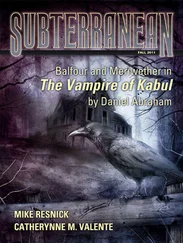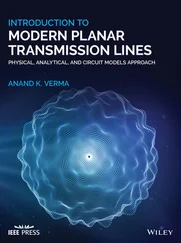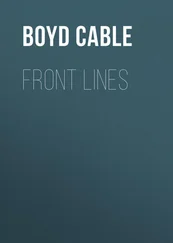Anne Siddons - Fault Lines
Здесь есть возможность читать онлайн «Anne Siddons - Fault Lines» весь текст электронной книги совершенно бесплатно (целиком полную версию без сокращений). В некоторых случаях можно слушать аудио, скачать через торрент в формате fb2 и присутствует краткое содержание. Жанр: Старинная литература, на английском языке. Описание произведения, (предисловие) а так же отзывы посетителей доступны на портале библиотеки ЛибКат.
- Название:Fault Lines
- Автор:
- Жанр:
- Год:неизвестен
- ISBN:нет данных
- Рейтинг книги:3 / 5. Голосов: 1
-
Избранное:Добавить в избранное
- Отзывы:
-
Ваша оценка:
- 60
- 1
- 2
- 3
- 4
- 5
Fault Lines: краткое содержание, описание и аннотация
Предлагаем к чтению аннотацию, описание, краткое содержание или предисловие (зависит от того, что написал сам автор книги «Fault Lines»). Если вы не нашли необходимую информацию о книге — напишите в комментариях, мы постараемся отыскать её.
Fault Lines — читать онлайн бесплатно полную книгу (весь текст) целиком
Ниже представлен текст книги, разбитый по страницам. Система сохранения места последней прочитанной страницы, позволяет с удобством читать онлайн бесплатно книгу «Fault Lines», без необходимости каждый раз заново искать на чём Вы остановились. Поставьте закладку, и сможете в любой момент перейти на страницу, на которой закончили чтение.
Интервал:
Закладка:
“No, I was back home at my son’s first big-time football game. I missed the Northridge, too. I was up in the mountains when that hit. I’ve never been in one, not a big one.”
We drove in silence for a while, and then I said, “T.C.?”
“Yeah?”
“Are you camped up there waiting to be in an earth-quake?”
“Yeah. I guess that’s about it.”
“And you think that’s where the next big one will be? Even when everybody’s saying that the…what, the seismic gap there was filled by the Loma Prieta?”
“That’s what I think, Merritt.”
“Why?”
He sighed a long, soft sigh, and said, “Because I can feel it coming. I can feel a big quake waiting to happen right through the soles of my feet. I can feel it getting stronger. I felt it the first time I went up there, when I was in Berkeley that time. That quake down in that earth talks to me like a giant that’s been buried alive. I know I’m not wrong about that. What I don’t know is when. Nobody knows that, not with any precision. But I know that it isn’t going to be long.”
I felt the hair prickle along the back of my neck.
“You said you’d get us out before it happened—”
“It’s not going to be that soon. I really would know that. None of my instruments indicate that. Neither do the bottoms of my feet. I’d get you out, Merritt.”
I sat looking at the empty sea and the cliffs. I felt something bleak inside me, like grief, an old, deep, tidal pull. I realized that I had been talking to him, responding to him, as if he made perfect sense. But the clear, cool top part of my mind told me that he didn’t; that what he spoke was not science or even casual knowledge, but obsession. Maybe more than that.
“T.C., I don’t think I can bear it if you turn out to be crazy,” I said in a low voice, meaning it, and he laughed so hard that he had to slow the Jeep.
“What you need more than anything in your life is to make out with a crazy man,” he said, when he finally stopped laughing. “You have not lived until you’ve been loved by a loony. I can promise you that, should you accept the advances I am most certainly going to make before this day is over, you will never forget the experience. I will growl; I will froth; I will snuffle. I will roar. It will ruin you for suits and the Junior League for the rest of your life.”
Once again I laughed, unwillingly but helplessly. T. C. Bridgewater simply delighted me. The laugher was healing. I did not think a truly mad man could be a funny one. If he had an earthquake madness in him, well, I was unlikely to be dis-accommodated by that. The rest of him was as whole and strong and as open as the earth and air of his mountains. That part drew me to it as if he had a powerful magnet deep in the center of him, and I a core of warm iron.
“Growling is okay,” I said. “Froth is definitely out. Snuffling— maybe . Roaring—I don’t know yet. We’ll see.”
His face grew serious in that mild, interested way that it sometimes did.
“Who is this talking?” he said.
“I don’t know her,” I said. “She just followed me out here. Should I keep her?”
“Oh, yeah. Yeah, you should definitely do that,” he said slowly and softly, and the warm ore in my middle gave a leap.
“You’d better tell me some more about earthquakes, and be quick about it,” I said. “Why do y’all have them out here, and we don’t at home?”
“You do have them back home. There’ve been really destructive ones in Charleston and Missouri. There’s an active fault under New York City. There are faults all over the place that we don’t know about and won’t till they blow; Northridge was on a fault nobody knew was there. But California is the meeting place for two of the tectonic plates that make up the crust of the earth. There are seven major ones and some other, smaller ones. The ones that give California all the trouble are the Pacific plate, that’s mainly under the Pacific Ocean, and the North American. That one underlies the earth out here. They kind of slide past each other, with the Pacific going northwest, and the North American vice versa, and where they bump together is the San Andreas Fault. The San Andreas is a transform fault—the plates don’t destroy old material or create new. The places where the boundaries spread apart underwater and let new molten mantle rock rise are called spreading centers, and the big ocean trenches where the cold, dense oceanic plates are forced underneath the continental plates are called subduction centers. Most of the seismic activity in the world occurs within narrow areas along those plate boundaries. There’s a phenomenal amount of activity in a line that runs along the western coast of North and South America, up across the Aleutian Islands, and down through the waters off Asia. It fetches up off New Zealand. It’s called the Ring of Fire, because there’s so much earthquake and volcano activity going on. There’s nothing near to that off the East Coast. The nearest subduction center is way, way out to sea. Y’all just have to make do with hurricanes and tornadoes.”
“So there’s earthquake activity going on all the time, but maybe not strong enough to feel it?” I said, hating the thought. It was like suddenly finding that you had been standing on a nest of squirming small snakes all along, but never noticed until a big one bit you.
“About ten thousand a day, in California alone,” he said proudly. “Only the most sophisticated equipment can pick up most of them. You start feeling them about two point seven or three. They’re using a network of receivers now, for instance, that pick up signals from the army’s Global Positioning System satellites and tell you where and how much the earth is moving within a fraction of an inch—and it’s moving all the time. Over the ages most of the earth has moved around dramatically. You ought to read John McPhee’s Assembling California , to see how California, and the whole earth for that matter, is made up of chunks of rock that were carried from somewhere else by earthquake action. That’s over a period of millions of years, of course. Or read Kenneth Brown’s Cycles of Rock and Water at the Pacific Edge . Fascinating; really fascinating. Somewhere in one of them is the statement that the top of Mount Everest is made from marine sandstone. That just plain fries the roots of my hair.”
I looked at him. His face was rapt and his eyes were farfocused, as if they could actually see the gargantuan, millennial creep of the earth; see the ancient spasms that flung up coastal mountains and corrugated deserts, that moved future continents and countries around like building blocks. Through his dark, blind eyes I too could see, for just a moment, that vast old cyclopean tumbling. It made my breath shallow and thin and the space around my heart cold.
“It makes me feel like throwing up,” I said. “If I thought about it I’d be so dizzy I couldn’t walk upright on the earth again.”
“Ah, well,” he said. “You don’t have to love it. You just have to see why I do. That’s important to me, that you see that.”
“I see that it’s important to you,” I said. “You’ll just have to make do with that. Have you ever thought about teaching this stuff, or becoming a seismologist or a geologist or something? With your…passion for it, I think you’d make a wonderful teacher—”
“I don’t want to do anything about earthquakes,” he said. “I don’t want to teach people about them. I just want to know about them.”
“But when you do that—when you know—what then? What will you have?”
We were heading up the Olema Valley. On either side of us sharp-boned mountains rose abruptly, a thousand feet or more. The fog that had held off so far was drifting along the road, and he slowed the Jeep to accommodate it.
Читать дальшеИнтервал:
Закладка:
Похожие книги на «Fault Lines»
Представляем Вашему вниманию похожие книги на «Fault Lines» списком для выбора. Мы отобрали схожую по названию и смыслу литературу в надежде предоставить читателям больше вариантов отыскать новые, интересные, ещё непрочитанные произведения.
Обсуждение, отзывы о книге «Fault Lines» и просто собственные мнения читателей. Оставьте ваши комментарии, напишите, что Вы думаете о произведении, его смысле или главных героях. Укажите что конкретно понравилось, а что нет, и почему Вы так считаете.












